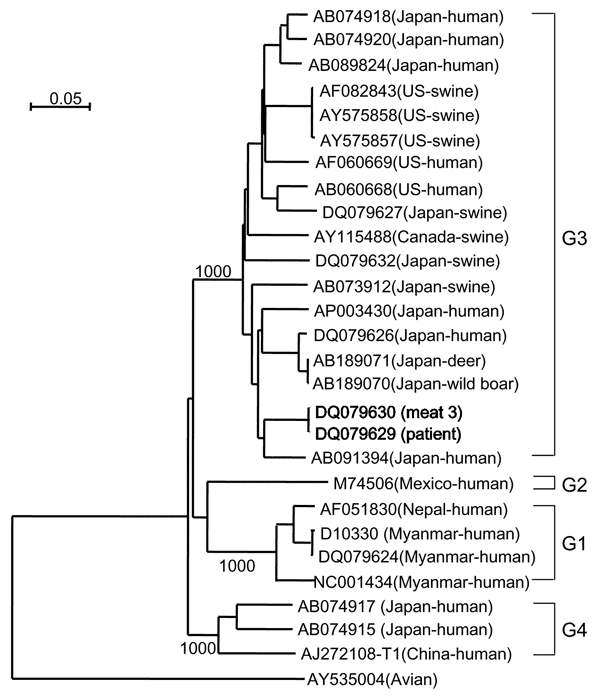Volume 11, Number 12—December 2005
Dispatch
Hepatitis E Virus Transmission from Wild Boar Meat
Figure

Figure. Phylogenetic tree of hepatitis E virus (HEV) reconstructed with avian HEV as an outgroup. Nucleotide sequences of the entire open reading frame 2 were analyzed by the neighbor-joining method. The bootstrap values correspond to 1,000 replications. The 2 nucleotide sequences characterized in this study are shown in bold. The horizontal scale bar at the top left indicates nucleotide substitutions per site.
Page created: February 02, 2012
Page updated: February 02, 2012
Page reviewed: February 02, 2012
The conclusions, findings, and opinions expressed by authors contributing to this journal do not necessarily reflect the official position of the U.S. Department of Health and Human Services, the Public Health Service, the Centers for Disease Control and Prevention, or the authors' affiliated institutions. Use of trade names is for identification only and does not imply endorsement by any of the groups named above.